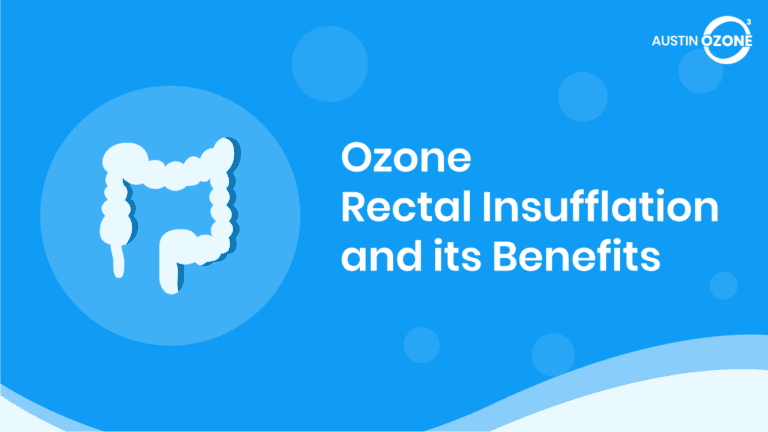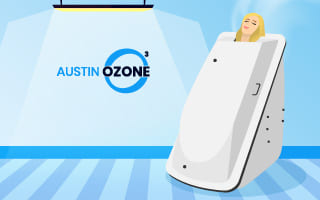Glaucoma is a type of eye disease involving a fluid build-up in the front part of the eye. The extra fluid puts an increased pressure on the eye, damaging the optic nerve.
It is the leading cause of blindness1 for people who are aged 60 years and above. Since its effects are irreversible, it is important that various forms of treatment be available. Ozone therapy for glaucoma is one of them.
Schedule an Ozone Therapy Session Today!
Overview of Glaucoma
Glaucoma is a collective term for eye diseases that damage the optic nerve. Even though it often leads to the loss of vision, this effect is gradual, so some people do not notice they have it until it is too late.
The only way to confirm whether you have glaucoma is through a comprehensive eye examination. Most types of glaucoma cannot be prevented, but they can be treated. The earlier it can be detected, the better it is for the patient.
Damages Caused by Eye Pressure on the Optic Nerve
Eye pressure usually builds up when the fluid in your eye cannot drain normally. The fluid builds on the anterior chamber, a spongy tissue located between the cornea and the iris, and flows out of the eye.
If the fluid passes too slowly, it causes the pressure inside your eye to build up, which then causes optic nerve damage.
Even when your anterior chamber works fine, you may still get optic nerve damage from the normal pressure if your eyes are more sensitive to pressure than others. The amount of pressure that is acceptable for the eye varies from person to person. As such, there is no standard eye pressure that needs to be met to prevent glaucoma.
Glaucoma can develop in one or both eyes, so it is best to get both eyes checked when you are experiencing discomfort.
Types of Glaucoma
There are different types of glaucoma. When your doctor does not know the exact cause of your glaucoma, it is called primary glaucoma1. However, if your glaucoma is caused by another medical condition, it is called secondary glaucoma1.
Primary: Open-angle Glaucoma
This is the most common type of glaucoma. Its exact cause is unknown. However, those who have high blood pressure are more at risk of acquiring it.
Normal-tension glaucoma, a type of open-angle glaucoma, seems highly specific to those who are of Japanese ancestry.
Primary: Angle-closure or Acute Glaucoma
This happens when the iris’ outer edge blocks the draining of the fluid from your eye, creating a sudden pressure.
Acute glaucoma is considered a medical emergency since this can cause complete blindness in just a matter of days. If you are experiencing sudden blurred vision, nausea, and intense pain, you should consult your doctor immediately.
Primary: Congenital Glaucoma
People who have congenital glaucoma are born with it. It is extremely rare, and infants who are born with it have cloudy eyes and are sensitive to light.
Secondary: Neovascular Glaucoma
Usually caused by either diabetes or high blood pressure, neovascular glaucoma happens when an extra blood vessel covers the part of the eye where the fluid drains. To treat it, the doctor needs to treat the underlying medical condition (i.e. diabetes) first.
Secondary: Pigmentary Glaucoma
Patients with pigmentary glaucoma are often near-sighted. It happens when a pigment from your iris detaches itself and blocks the fluid from your eye. With it, you can have blurry vision or see rings of rainbow around light sources.
Secondary: Uveitic Glaucoma
Uveitic glaucoma happens to people suffering from an irritated, inflamed, and swollen eye. It affects the middle area of the eye (uvea) and destroys the eye wall or tissue.
Aside from unbearable pain, uveitis also leaves a scarred tissue right in the middle of the eye, which effectively blocks the fluid from being drained.
Signs and Symptoms of Glaucoma
Glaucoma does not usually show any symptoms. Even if it does, the symptoms happen so slowly that the people who are affected do not realize they have glaucoma unless they take a comprehensive eye exam.
If you notice any of the following symptoms, it is a good idea to get your eyes examined for glaucoma:
Loss of Peripheral Vision
When you have glaucoma, the first one to go is your peripheral vision. This is everything you can see off to the side of your central focus while looking straight ahead.
This symptom is barely noticeable that when patients start to notice they are losing their side vision, glaucoma is usually already in its late stages.
Cloudy or Hazy Eyes
After the loss of vision, you can have cloudy or hazy eyes. Cloudy eyes are common with people born with glaucoma while red, painful eyes are indicative of an angle-closure glaucoma.
Risk Factors for Glaucoma
Primary glaucoma has no specific cause, but secondary glaucoma is triggered by other medical conditions3 such as a family history of glaucoma, diabetes, short-sightedness (myopia), far-sightedness (hyperopia), an eye injury or infection, high blood pressure, and cortisone drugs or steroids.
The chances of developing glaucoma are also higher for people over the age of 60 and who are of African, Latin, or Hispanic descent.
Diagnosing Glaucoma
To determine whether you have glaucoma, eye doctors will conduct a comprehensive dilated eye exam. You will need eye drops to dilate the pupil, then the doctor will check your eye.
Dilated eye exams include a visual acuity test, which determines how far and clear you can see; a visual field test to determine what your peripheral vision is like; an eye muscle function test; a pupil response test; and a tonometry test, which determines your eye pressure.
It is recommended that you undergo the procedure once a year if you have a high risk of glaucoma. Patients with diabetes or high blood pressure should also undergo the tests annually since their condition can lead to glaucoma.
Common Treatments for Glaucoma
Eye Drops
Prescription eye drops are the most common treatment method for glaucoma. They aim to lower the eye pressure and stop it from damaging the optic nerve. However, they can neither reverse your glaucoma nor cure it. They only stop it from getting worse.
The type of eye drop prescribed depends on the other medicines or supplements you are already taking.
You need to use the eye drops everyday for it to be effective. Most people do not experience any problem in using glaucoma medicines, but some may experience a blurry vision, headache, a burning sensation in the eye, and a change in energy level or heartbeat.
Laser Treatment and Surgery
Other treatment options include laser treatment and surgery. Both treatment options also aim to decrease eye pressure by draining the fluid from the eye.
For laser treatment, you might feel some soreness after the procedure, but it usually goes away after a day. Unfortunately, its effects do not last forever. Most people still take their glaucoma medication after the treatment and will need to undergo another laser treatment when the last one wears off.
Surgeries, on the other hand, can prevent your glaucoma from getting worse but cannot recover the lost vision.
There are three main kinds of surgery for glaucoma: trabeculectomy, glaucoma implant surgery, and minimally invasive glaucoma surgery. It usually takes 2 to 4 weeks for the eye to heal.
Ozone Therapy for Glaucoma
With more people incurring glaucoma, the need to have alternative methods to treat it increases.
One such treatment is ozone therapy. It has been used for decades as treatment for a wide variety of diseases. Its therapeutic effects are studied4 even today.
At the same time, some eye doctors2 are also considering ozone therapy as a viable treatment option for ophthalmological diseases like glaucoma.
Ozone therapy utilizes medical ozone gas, a substance that has been known for its disinfecting and antioxidant properties. It also increases blood circulation, eliminates toxins, and improves organ function.
Ozone therapy utilizes medical ozone gas, a substance that has been known for its disinfecting and antioxidant properties. It also increases blood circulation, eliminates toxins, and improves organ function.
The procedure is considered as a potential treatment for glaucoma-inducing conditions such as diabetes and high blood pressure3. Recent studies2 have also demonstrated that ozone therapy yields better results than conventional treatments for glaucoma. However, more studies are needed to verify these results.
Summary
Glaucoma refers to various forms of eye diseases that can cause the gradual loss of vision. Unfortunately, there is no definite cure for it.
Treatments such as eye drops, laser, and surgery do not reverse glaucoma’s effects and only prevents further infection.
Alternatively, ozone therapy is used to help treat glaucoma. This procedure includes the introduction of medical ozone to the eyes, which can lead to better results than conventional treatments.
Schedule an Appointment Today
References
- Boyd, K. (2020, October 9). Glaucoma. Retrieved from https://www.aao.org/eye-health/diseases/what-is-glaucoma
- Diaz, E., Borrego, L., Menendez, S., Borrego, R., Borrego, R., & Lenin, V. (2019, October 28). OZONE THERAPY IN DIFFERENT OPHTHALMOLOGIC DISEASES. Retrieved from https://www.ozonetherapiesgroup.com/ozone-research/2019/10/28/ozone-therapy-in-different-ophthalmologic-diseases
- Pyper, L. (2014, March 5). What is glaucoma? Retrieved from https://salvagente.co.za/ozone-saunas/what-is-glaucoma/
- Rowen, R. (2012, December). The amazing ozone healing miracles from Cuba. Retrieved from http://www.oxygenhealingtherapies.com/Ozone_Cuban_Healing_Miracles.html




